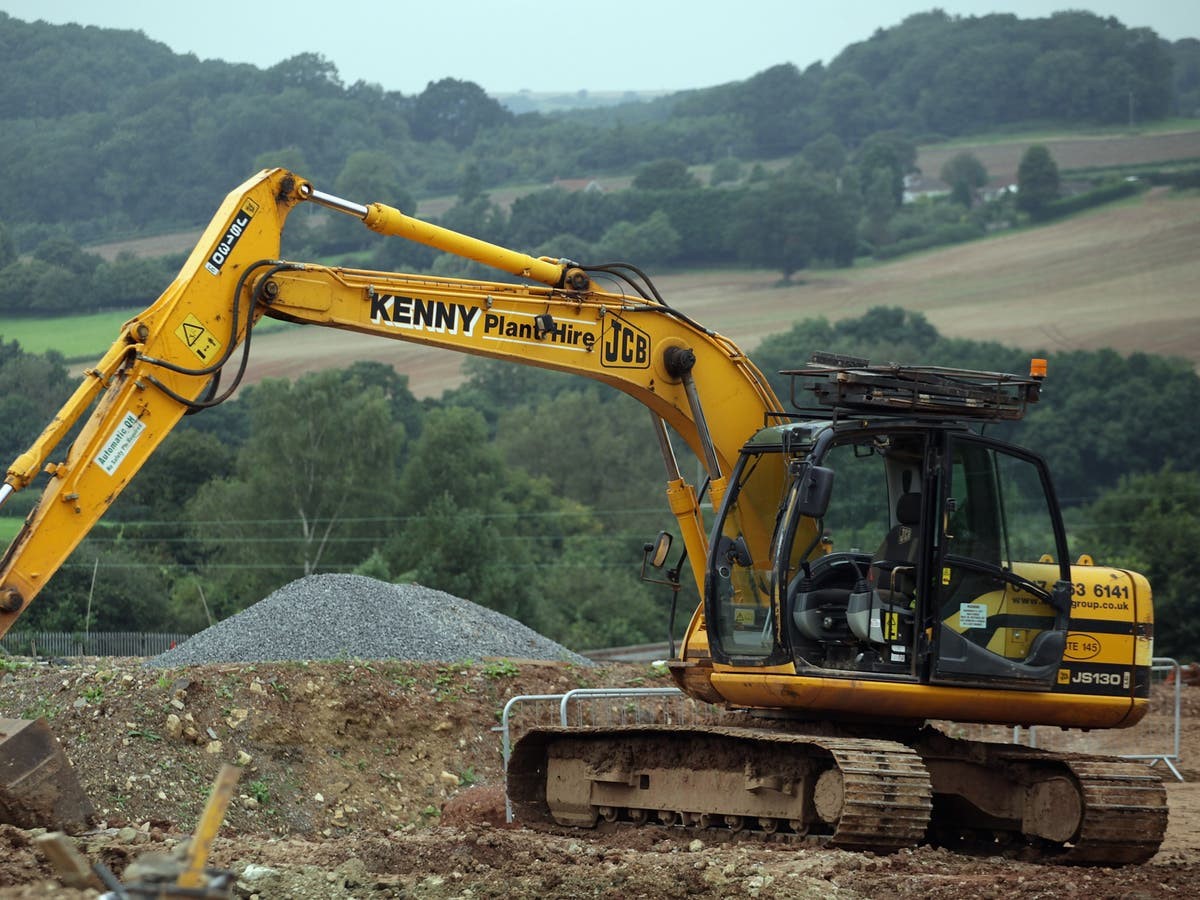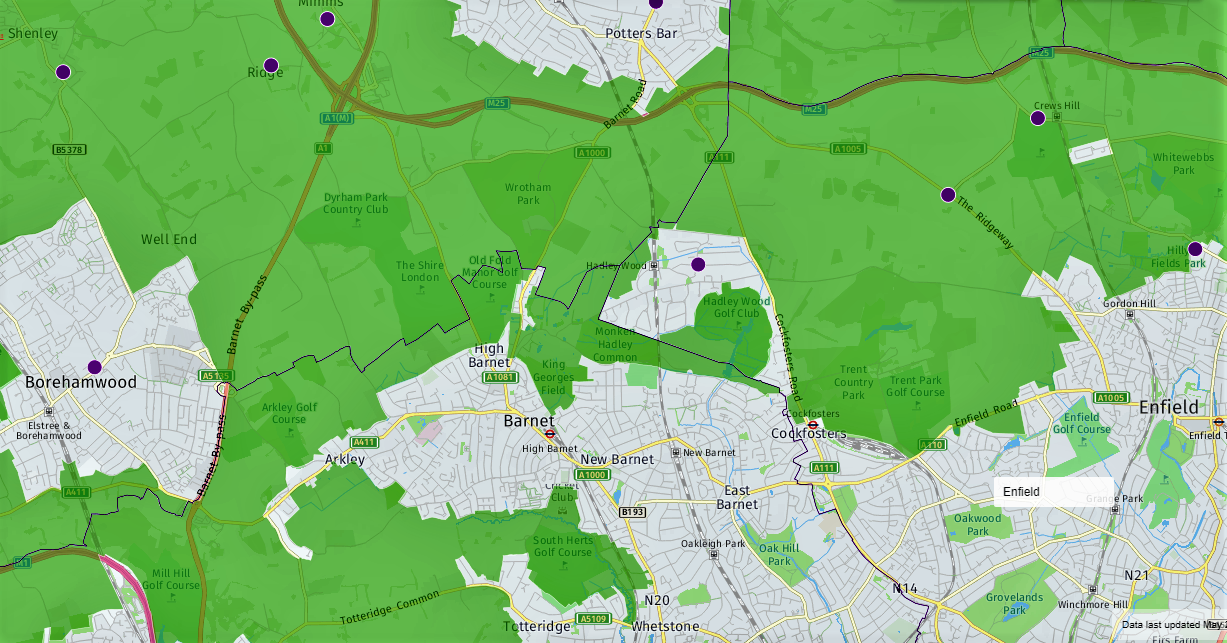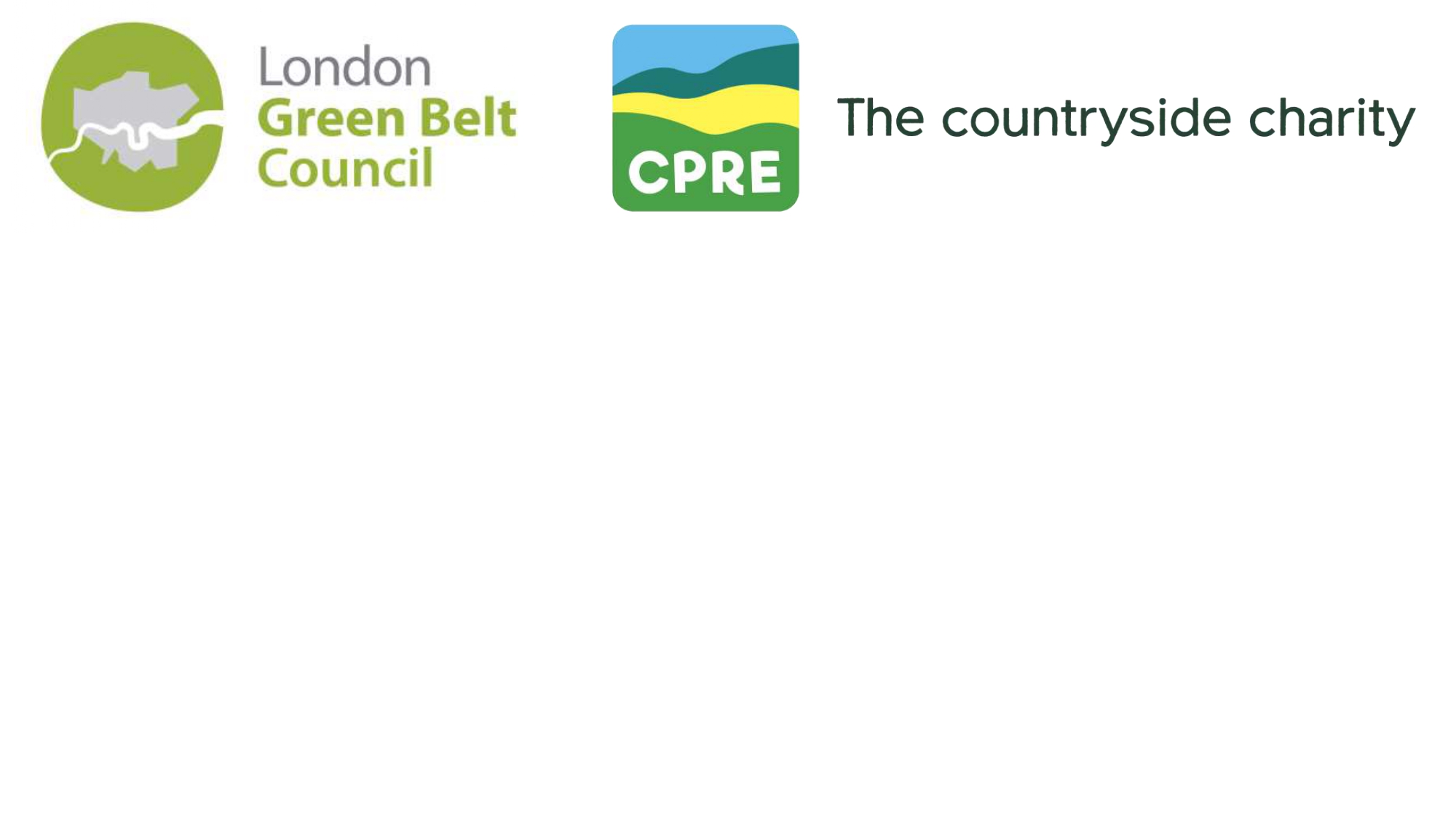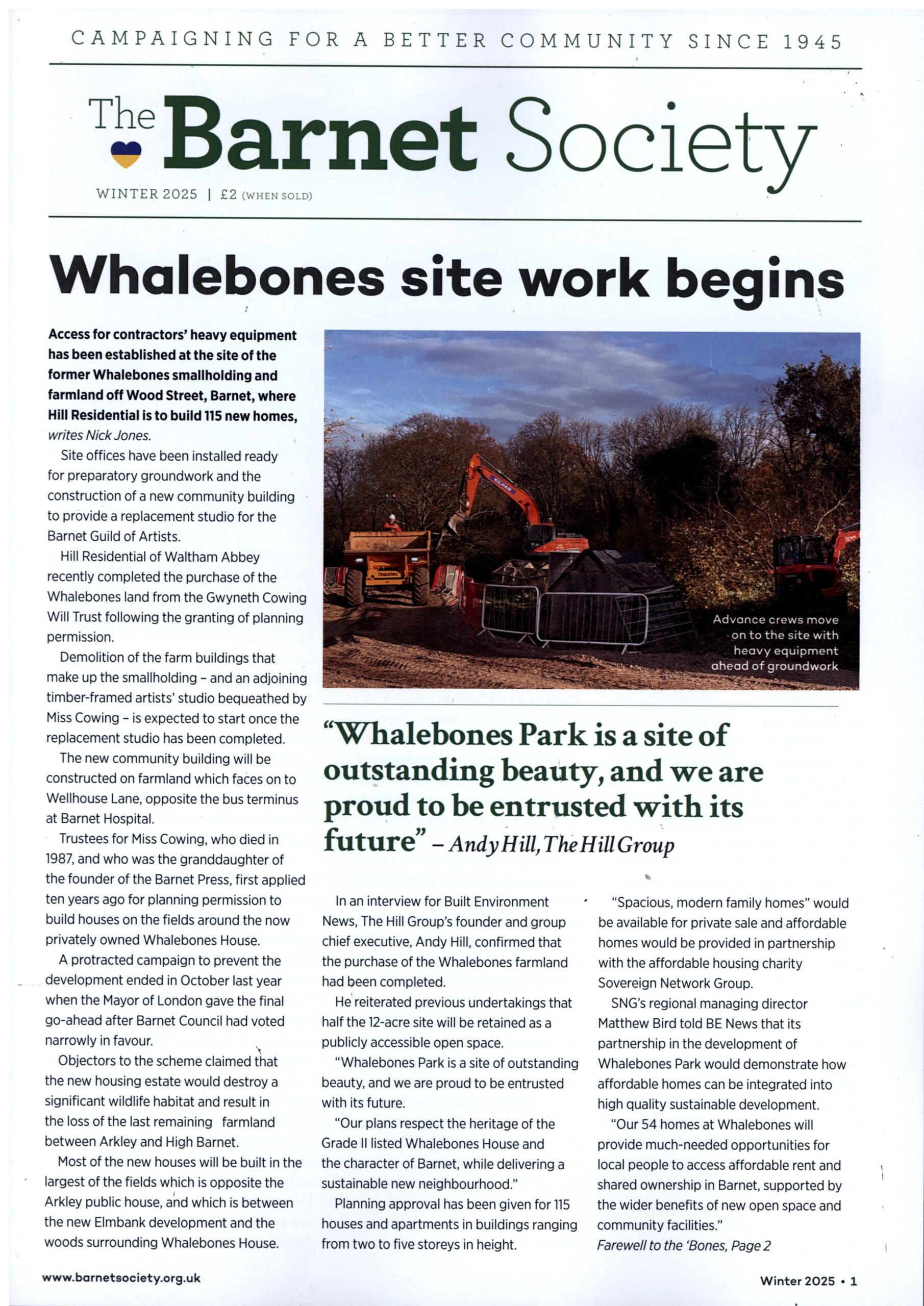London is set to lose 48,000 acres of its local countryside

Local councils in London and the Home Counties are currently planning to allow building on more than 48,000 acres of the Green Belt, according to a major new report by the London Green Belt Council (LGBC). That’s huge: the equivalent of the combined area of the London Boroughs of Barnet, Camden and Enfield – or of 60 Hampstead Heaths.
It is a shocking statistic, especially when the government – including both Conservative leadership contenders Rishi Sunak and Liz Truss – claims to be committed to protecting the Green Belt. Our own MP, Theresa Villiers, has called the situation ‘very worrying’.
The report ‘Safe Under Us’? The continued shrinking of London’s local countryside, 2022 shows that altogether the amount of Green Belt land offered up for development has increased by a massive 127% since 2016, when the LGBC first started tracking threats to London’s local countryside.
Land around London began to be safeguarded from the interwar sprawl of London’s suburbs in the 1930s, and in his 1944 Greater London Plan, Patrick Abercrombie proposed a ring of greenery around the capital. In 1945 our Society was founded to protect the fields around Chipping Barnet from being built over for 40,000 houses. In 1955 the Green Belt was enshrined in planning law, leaving us surrounded on three sides by greenery (see map below).

Since then the Green Belt has been a vital ‘green lung’ for Londoners seeking respite from their urban habitat. More recently, the vital role that open countryside plays in biodiversity, flood prevention and climate change mitigation has become obvious. The Covid-19 pandemic proved its enormous value to people’s health and wellbeing. And the Ukrainian crisis reminds us of its importance for food security.
‘Safe Under Us’? details the extent of Green Belt loss under the Local Plans currently being drafted by every Council. It points out how all of the region’s housing needs could easily be met by building on brownfield (previously developed) urban sites instead. The full report can be read here.
The report highlights the fact that many councils are still using housing figures based on out-of-date (2014) population and household projections from the Office for National Statistics when more recent and accurate Census figures show a marked slowing-down of population increase. Far fewer houses are actually needed than are currently being planned for.
Furthermore, adds LGBC Chairman Richard Knox-Johnston, “It is a fallacy that building in the Green Belt will provide affordable homes. New development in the Green Belt is mainly 4 or 5-bedroom homes built at very low densities since those are the most profitable for developers to build, so not providing affordable homes for young people.”
The counties of Hertfordshire, Essex and Surrey account for two-thirds of all the current development threats. Barnet is one of the least offending planning authorities, planning to build 576 homes on a mere 133 acres of the Green Belt. Fortunately, most of these are previously-developed land in Mill Hill (the former National Institute of Medical Research and Jehovah’s Witness sites).
Despite Barnet’s policies on protecting the Green Belt and environment, however, over the last five years around 40 planning applications have been made to build on Green Belt in or near Chipping Barnet. Most are to replace existing buildings with modest residential developments, but some cause us considerable concern. They include substantial gas and electricity plants off Partingdale Lane. The former was withdrawn and the latter refused permission – but Harbour Energy has just appealed against the latter decision, so that threat remains.
And Barnet’s draft Local Plan includes a proposal for a large leisure hub in the middle of Barnet Playing Fields – which are designated Green Belt – despite similar facilities being available for community use in two nearby schools.
The Society watches such cases closely. We’re strengthened by being longstanding members of the LGBC, and of its sister organisation, the Council for the Protection of Rural England (CPRE). Several of our Committee Members are actively involved with the LGBC: Derek Epstein is its Membership Secretary, Simon Watson manages its website and I’m on its Executive Council. Derek and I contributed to ‘Safe Under Us’?.

Tags: #Barnet Council #Barnet-playing-fields #Census #Chipping Barnet #Countryside #Development #Environment #Government #Green-belt #Greenbelt #LGBC #Mill Hill #Nature #Open-spaces #Planning #Sustainability

